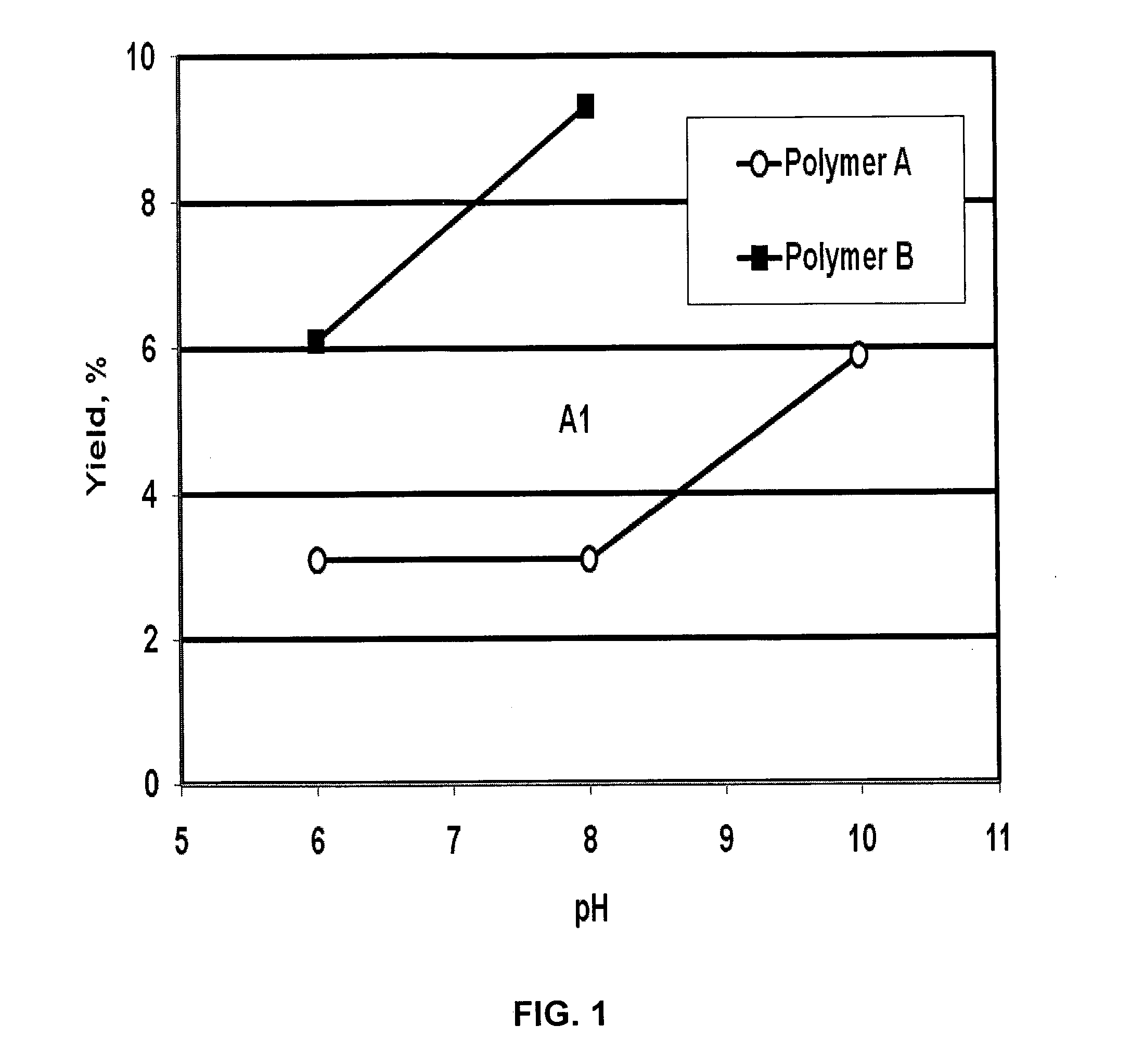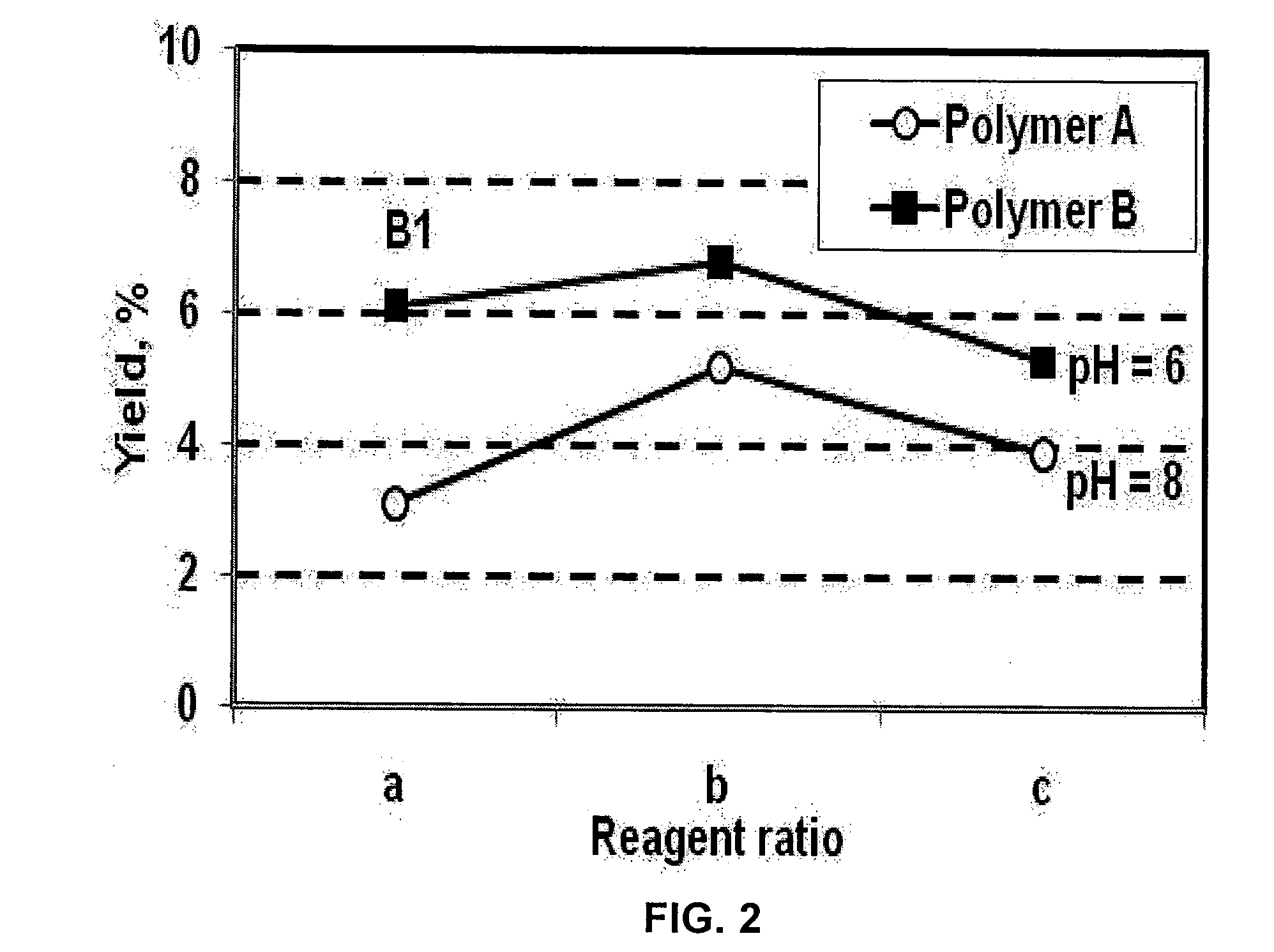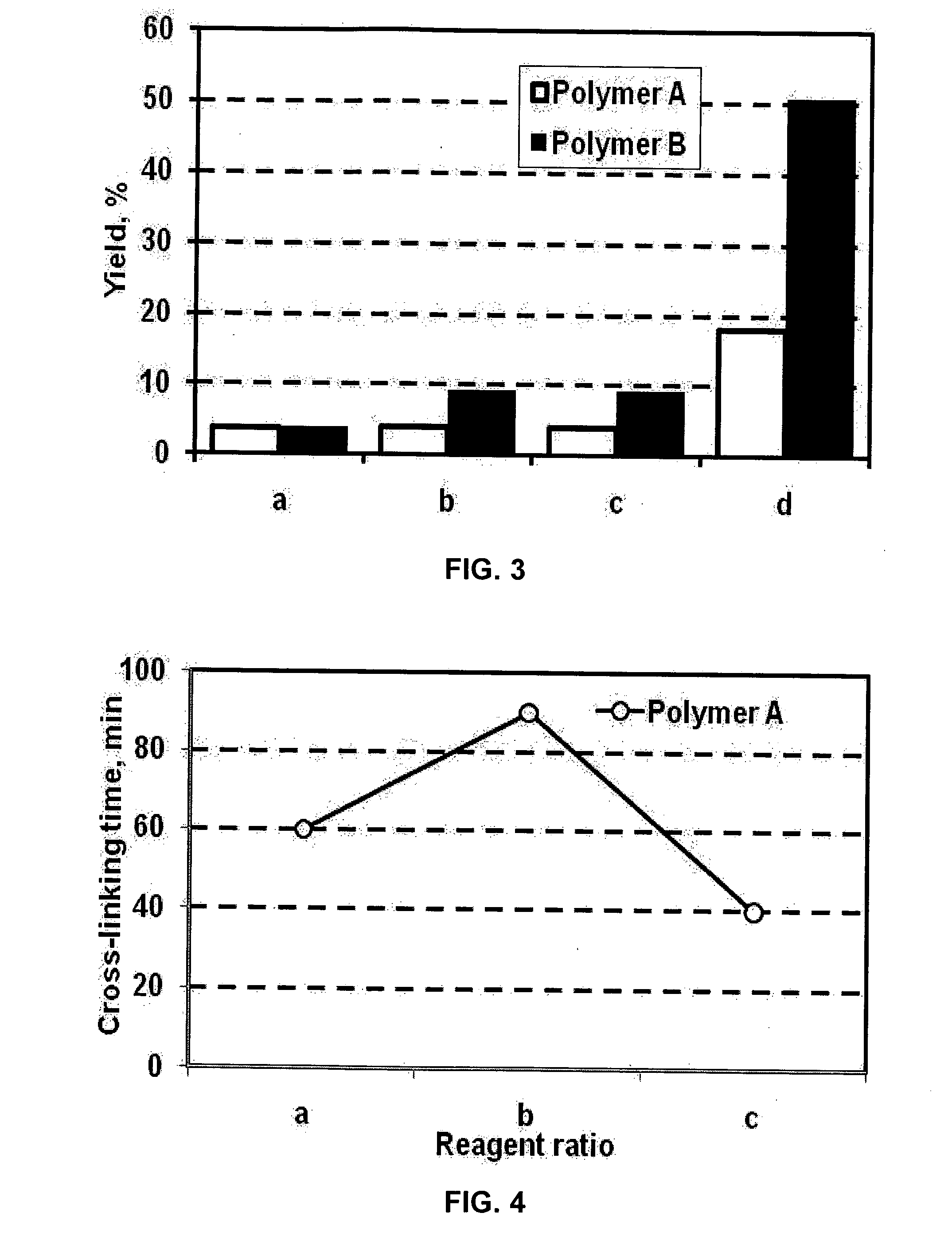Subterranean Reservoir Treatment Method
- Summary
- Abstract
- Description
- Claims
- Application Information
AI Technical Summary
Benefits of technology
Problems solved by technology
Method used
Image
Examples
example 1
[0067]The effect of pH in the range of about 6 to 10 on the Mannich reaction was investigated; the results are summarized in FIG. 1. The concentrations of polymers A and B were 5.0 and 3.3 weight percent, respectively. 3.5 ml of aqueous ammonia and 2.0 g of paraformaldehyde were added. The reaction temperature was 100° C. and the reaction time was 10 min. The yield of amine groups increased with an increase of pH; the optimal pH found for the reaction is above 8. The average molecular weight of the polymer decreased in the reaction (see Table 1, in which original polymer A is compared to polymer A1).
example 2
[0068]The effect of the reagent ratio on the Mannich reaction was analyzed by adding either equimolar quantities or an excess of either ammonia or paraformaldehyde relative to the amount of amide groups in the original polymer. The reaction was carried at 100° C., (a) corresponds to 3.5 ml of aqueous ammonia and 2 g of paraformaldehyde (an equimolar ratio); (b) corresponds to 5 ml of aqueous ammonia and 2 g of paraformaldehyde; and (c) corresponds to 3.5 ml of aqueous ammonia and 3 g of paraformaldehyde. An excess of amine increased the yield of amine groups at both pH values, as shown in FIG. 2. Polymers B and B1 are characterized in Table 1.
example 3
[0069]Amines other than ammonia: (a) guanidine; (b) aminoguanidine; (c) hexamine; (d) tetraethylenepentamine (TEPA) were tested in the Mannich reaction, as shown in FIG. 3. The polymer concentrations were 1 weight percent; the reactions were performed at 100° C. for 30 min. The resulting polymers had higher amine group contents, especially the product of aminomethylation with TEPA.
PUM
| Property | Measurement | Unit |
|---|---|---|
| diameter | aaaaa | aaaaa |
| diameters | aaaaa | aaaaa |
| size | aaaaa | aaaaa |
Abstract
Description
Claims
Application Information
 Login to View More
Login to View More - R&D
- Intellectual Property
- Life Sciences
- Materials
- Tech Scout
- Unparalleled Data Quality
- Higher Quality Content
- 60% Fewer Hallucinations
Browse by: Latest US Patents, China's latest patents, Technical Efficacy Thesaurus, Application Domain, Technology Topic, Popular Technical Reports.
© 2025 PatSnap. All rights reserved.Legal|Privacy policy|Modern Slavery Act Transparency Statement|Sitemap|About US| Contact US: help@patsnap.com



